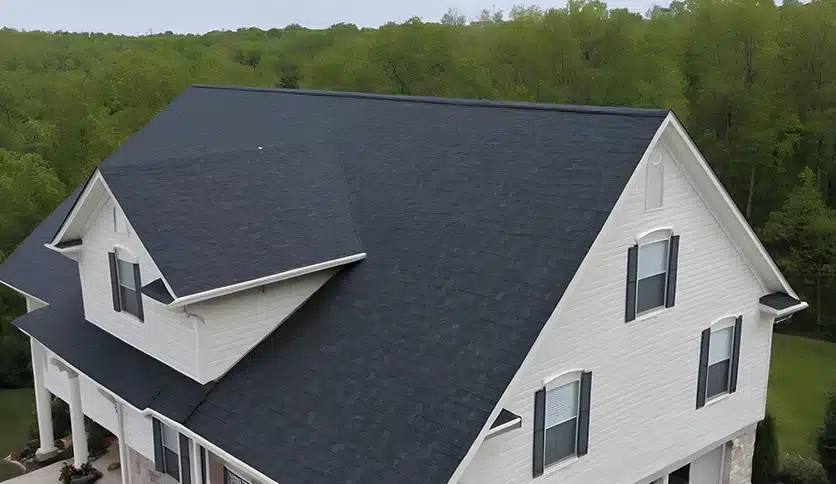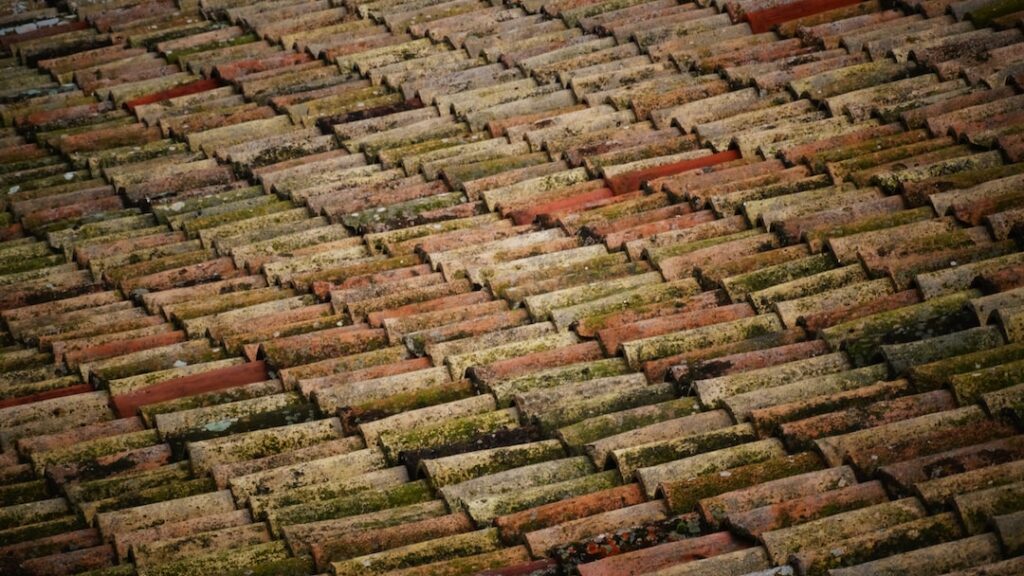Is Your Roof Telling You It’s Time? Key Signs You Can’t Ignore

Why Maintaining Your Roof is Crucial
How do you know if your roof needs replacing? This is a critical question for any homeowner, especially here in the DFW area where weather conditions can be quite harsh. To help you quickly spot the key signs, here’s a quick list:
- Age of the roof: Most asphalt shingle roofs need replacing after 20-30 years.
- Visible damage: Look for missing, cracked, or curling shingles.
- Granules in gutters: Excess granule loss indicates shingle wear.
- Sagging areas or leaks: These are emergency signs needing immediate attention.
A healthy roof is not just about curb appeal—it’s your home’s first line of defense against the elements. From shielding your family from rain and wind to maintaining structural integrity, your roof plays a pivotal role in home protection.
Ignoring roof issues can lead to severe problems, including structural damage, mold growth, and massive repair bills. Regular inspections and timely replacements are essential to ensure that your roof continues to perform its protective duties effectively.

How Do You Know If Your Roof Needs Replacing?
The Age Factor
The age of your roof is a crucial indicator of its health. Most asphalt shingle roofs have a lifespan of 20 to 30 years. If your roof is nearing or has exceeded this age range, it might be time to start planning for a replacement.
Note: If your current shingles were installed over an existing layer, their lifespan could be shorter—around 20 years.
Visual Inspection from the Ground
You don’t always need to climb up to check your roof. A simple ground-level inspection can reveal a lot. Look for missing shingles, which can result from weakened adhesive or improper installation. Also, pay attention to shingles that are cupping, curling, or clawing. These signs indicate that your roof is aging and may soon need replacement.

Gutter Granule Gatherings
If you notice an accumulation of grit or granules in your gutters, it’s a red flag. These granules protect shingles from the sun. Excessive loss means your shingles are deteriorating, making them more vulnerable to sun damage and warping.
Cracks and Breaks
Thermal cycles—the constant expansion and contraction due to temperature changes—cause shingles to crack over time. These cracks can appear as tears and are potential entry points for leaks. If you see multiple cracked shingles, it’s a sign that your roof might need replacing soon.
Unwanted Green Guests
Moss and algae on your roof aren’t just unsightly; they can cause damage. Moss keeps the roof surface damp, which can lead to water getting under the shingles. While moss and algae aren’t immediate reasons for a new roof, they should be addressed to prevent long-term damage. Be cautious: cleaning moss off your roof improperly can cause more harm than good.

Ignoring these signs can lead to severe problems, including structural damage, mold growth, and massive repair bills. Regular inspections and timely replacements are essential to ensure that your roof continues to perform its protective duties effectively.
When to Act: Immediate Signs You Can’t Ignore
The Sagging Dilemma
A sagging roof is a clear signal that something is seriously wrong. Sagging usually indicates a structural issue beneath the shingles, such as severe water damage or a broken rafter. According to Forbes, this problem requires immediate attention. Contractors will need to remove the shingles and plywood sheathing to diagnose and fix the underlying issue.
Ignoring a sagging roof can lead to catastrophic consequences, including a partial or complete roof collapse. This isn’t just costly; it’s dangerous. Texas Roof Shield offers free roof inspections to help you determine the severity of the sagging and the best course of action.
Water Intrusion Woes
Water damage is another urgent sign that your roof needs replacing. Leaks are often due to ice dams, compromised shingles, or deteriorated flashing. If you notice water spots on your ceiling or damp patches in your attic, your roof isn’t doing its job. Forbes highlights that leaks can lead to mold and attract pests like carpenter ants.
In addition to ceiling spots, a damp attic can indicate water intrusion. Mold growth is a severe consequence of ignoring water damage and poses significant health risks. Mold thrives in damp environments and can quickly spread, affecting your home’s air quality.
Light Invasion
Seeing light in your attic is a bad sign. Grab a flashlight and head up to your attic. If you see beams of light breaking through the roof, it’s a clear indication of gaps or holes. These openings can let in water, leading to the issues mentioned above.
Inspect your attic after heavy rain or during winter when ice dams are common. If you notice any signs of water intrusion, act quickly. According to Texas Roof Shield, ignoring these signs can weaken your roof’s structure, leading to sagging and potentially a complete collapse.
Ignoring these immediate signs can lead to severe problems, including structural damage, mold growth, and massive repair bills. Regular inspections and timely replacements are essential to ensure that your roof continues to perform its protective duties effectively.
Maintenance Matters: Extending Your Roof’s Lifespan
Importance of Professional Inspections
Regular inspections by a professional roofing contractor are crucial. A licensed professional can spot issues that are not visible to the untrained eye. They will check for signs of wear and tear, leaks, and structural problems.
Expert evaluation can help detect minor damages early, preventing them from becoming major issues. This early problem detection can save you a lot of money in the long run. As Texas Roof Shield suggests, proactive maintenance is always cheaper than reactive repairs.
Keeping Gutters Clean
Gutter cleaning is essential for preventing water damage. Leaves, twigs, and other debris can clog your gutters, leading to water buildup. This can cause damage to your roof and underlying structures over time.
Keeping gutters clear, especially after the fall season, is key to preventing water damage and potential rot. Clean gutters help improve the longevity of your roof by ensuring proper water drainage.
Moss and Algae: Prevention Over Cure
Moss and algae can harm your roof over time. They retain moisture, which can lead to shingle deterioration and structural damage.
Regular moss and algae removal is important for maintaining your roof’s health. Use a scrub brush, dish soap, and water, or consider a specific moss or algae cleaner. However, avoid pressure washing as it can damage your shingles.
Roof cleanliness is not just about aesthetics; it’s about preventing moisture retention and extending your roof’s life. Regular cleaning and preventative measures can significantly improve your roof’s lifespan.
By incorporating these maintenance tasks into your routine, you can ensure that your roof remains in excellent condition for years to come.
FAQs: Everything You Need to Know About Roof Replacement
How often should I inspect my roof?
It’s a good practice to inspect your roof twice a year—once in the spring and once in the fall. Additionally, you should inspect your roof after major weather events like hailstorms or hurricanes. Regular inspections help catch small issues before they turn into big problems.
Pro Tip: Pay attention to your attic as well. Look for signs of leaks, mold, or light coming through the roof boards.
Can I repair my roof instead of replacing it?
That depends on the extent of the damage. Minor issues like a few missing shingles or small leaks can often be repaired. However, if your roof is nearing the end of its 20 to 30-year lifespan or has significant damage, replacement might be more cost-effective.
Example: If your roof has multiple areas with cracked shingles, extensive granule loss, or sagging, it’s likely time for a full replacement.
What are the benefits of a new roof?
A new roof offers several benefits:
- Increased Home Value: A new roof can boost your home’s resale value.
- Improved Curb Appeal: A fresh roof improves the overall look of your home.
- Energy Efficiency: Modern roofing materials can improve your home’s insulation, reducing energy costs.
- Peace of Mind: Knowing your roof is in top condition means fewer worries about leaks and damage.
Fact: Many home insurers offer discounts on premiums for homes with new roofs, potentially saving you money in the long run.
By addressing these common questions, you can make informed decisions about your roof’s health and longevity.
Conclusion
Taking a proactive approach to roof maintenance and replacement offers numerous benefits. By identifying and addressing issues early, you can avoid costly repairs and extend the lifespan of your roof. Regular inspections, timely repairs, and understanding the signs of roof deterioration are key to maintaining a healthy, durable roof.
When it’s time for a new roof, partnering with a trusted and experienced company like Texas Roof Shield ensures you get high-quality materials and expert installation. Our team is dedicated to providing top-notch service and helping you make informed decisions about your roofing needs.
Investing in your roof is investing in your home’s future. Don’t wait until small problems become big headaches. Reach out to Texas Roof Shield today for a free quote and let us help you protect your home for years to come.
For more information on roof replacement signs and maintenance tips, visit our blog.
By taking these steps, you’ll enjoy the peace of mind that comes with knowing your home is well-protected from the elements. And with Texas Roof Shield by your side, you can rest assured that your roof is in expert hands.